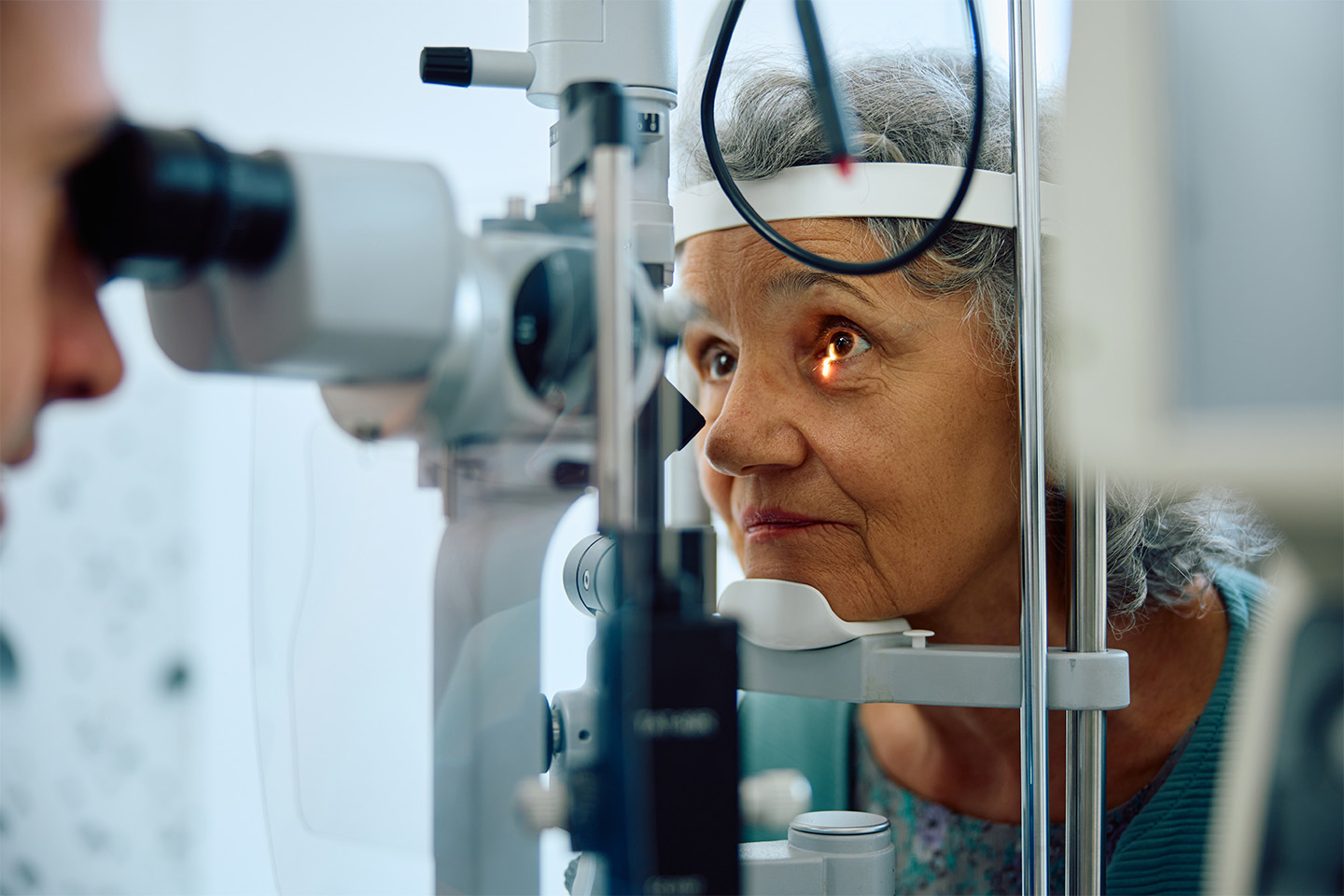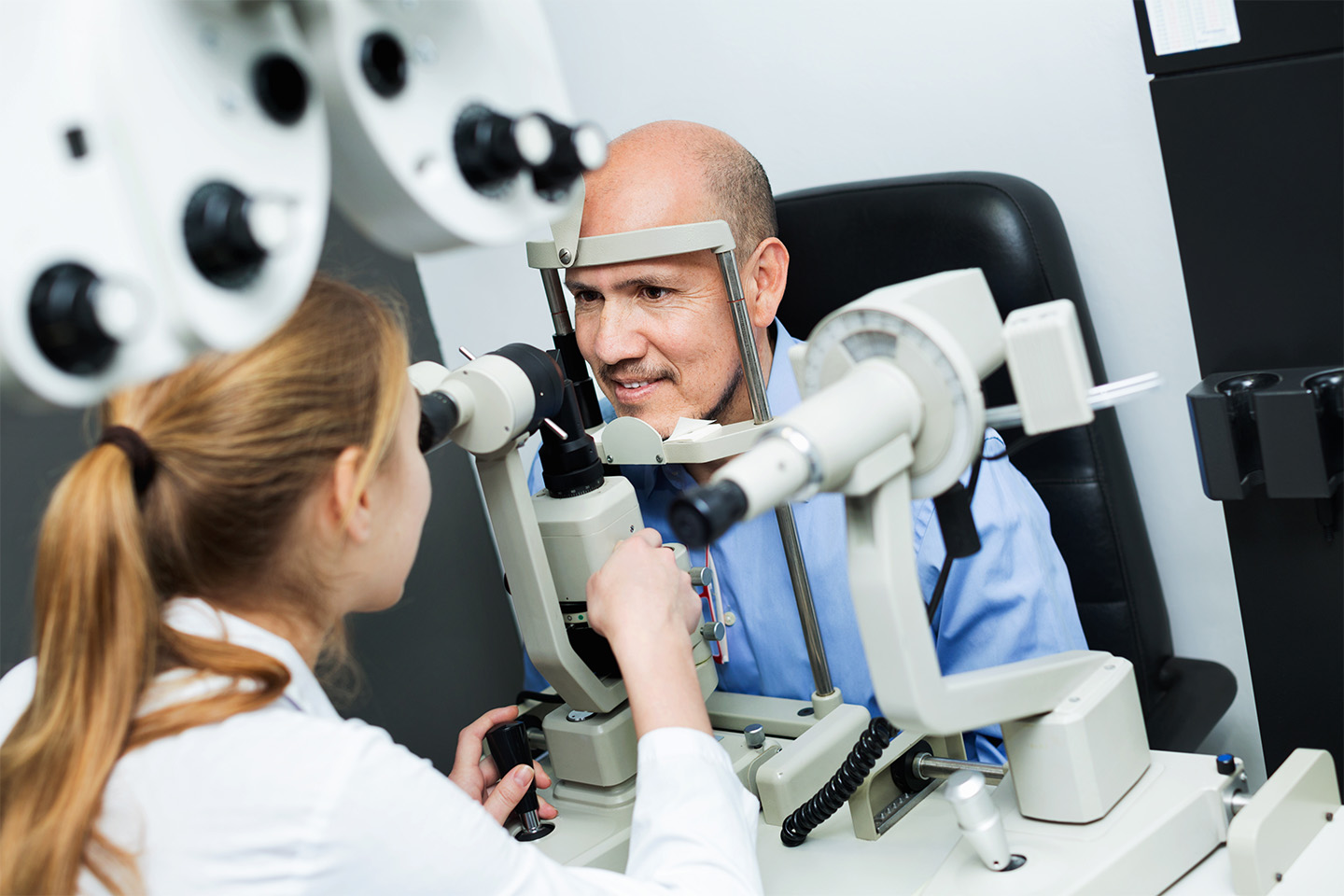What Is Glaucoma and How Is It Treated?

Glaucoma can be debilitating, but if it’s caught early, it’s possible to effectively halt and ultimately manage the condition.
You’ve probably heard of glaucoma, but you might not actually know what it is, who is at risk, and/or how it’s treated. We’ve compiled some helpful information on the causes, symptoms, and treatment options in order to help people identify the condition early and avoid falling victim to what has become the country’s leading cause of preventable blindness.
What Glaucoma Does
Glaucoma is a collection of related diseases that gradually damage the optic nerve, which is responsible for conveying visual data from the eye to the brain. This damage is caused by excessive pressure within the eye, which tends to be a consequence of an overproduction of intraocular fluid or an inability to properly drain it.
Unlike many eye diseases, glaucoma causes few significant symptoms during the early stages. As it progresses, patients might experience a slight ache in their eyes, see halos or glares around lights, and notice some degradation in their peripheral and/or nighttime vision. It can later result in a partial to complete loss of peripheral vision, preventing patients from noticing objects outside of their direct field of vision.
Glaucoma is a common cause of blindness in the United States, affecting over two million people. Anyone can suffer from it, but it’s seen most often in people over the age of 60, and is particularly common among women and African Americans. In addition, people with diabetes, a family history of glaucoma, and severe nearsightedness are all at greater risk of developing it.
Prevention and Treatment
While there isn’t a cure for glaucoma, there are a number of treatment options available to patients suffering from it. As with any disease, however, chances at an optimal outcome are significantly higher when these treatments begin as early as possible. Since most patients likely won’t detect glaucoma until it’s significantly advanced, people over the age of 35 are encouraged to receive regular eye exams so that it can be diagnosed and treated as soon as possible.
Recent advances in medical technology have made treating glaucoma simpler than ever before. Today, many patients can largely halt its progression by simply applying prescription eye drops that promote the drainage of intraocular fluid. Moreover, patients at a particularly high risk of developing it can use similar eye drops that can cut their likelihood of developing glaucoma in half.
While most patients should find significant relief from these conservative measures, glaucoma can also be treated with surgery in more severe cases. In recent years, it’s been effectively managed with various laser surgeries that facilitate drainage or reduce production of intraocular fluid. Less invasive alternatives include small devices that can be inserted into the eye that to lower and manage eye pressure.
If you’re concerned that you might be experiencing symptoms or are at risk of developing glaucoma, it’s best to get in touch with an experienced professional, like the experts at Swagel Wootton Eye Institute, as soon as possible. Schedule a consultation at our Mesa and Chandler locations today to discuss possible courses of treatment.









